Evolution of domestic optical reconnaissance satellites
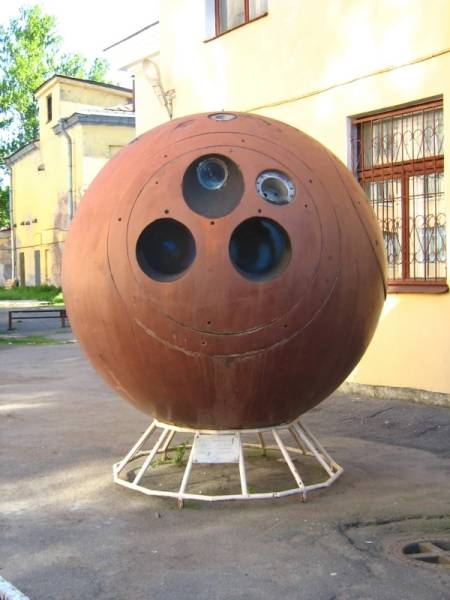
Used Zenit-2 satellite as a monument. Photo: Wikimedia Commons
Since the late fifties, the domestic rocket and space industry has been developing optical reconnaissance satellites, and over the past decades a number of different projects have been created. Reconnaissance satellites have developed and improved in different ways. First of all, improved target equipment was created and new technologies for surveying and data transmission were introduced. As a result, over several decades, the technical and operational characteristics of satellites have increased significantly.
Camera in capsule
At the end of the fifties, the Soviet OKB-1 (now RSC Energia) headed by S.P. Korolev worked on the Vostok series of spacecraft. In particular, the first domestic reconnaissance satellite carrying photographic equipment was created under the name “Vostok-2”. Later, after the flight Yu.A. Gagarin, this product was renamed “Zenit-2”.
The first Zenit launch took place in December 1961, but due to problems with the third stage of the launch vehicle, the device had to be blown up. At the end of April 1962, the first successful launch took place, but the satellite did not solve its problems. In July-August, the first successful flight was carried out, during which Zenit took a lot of pictures and safely delivered them to Earth. State testing of the product was completed in 1964, and it was put into service.
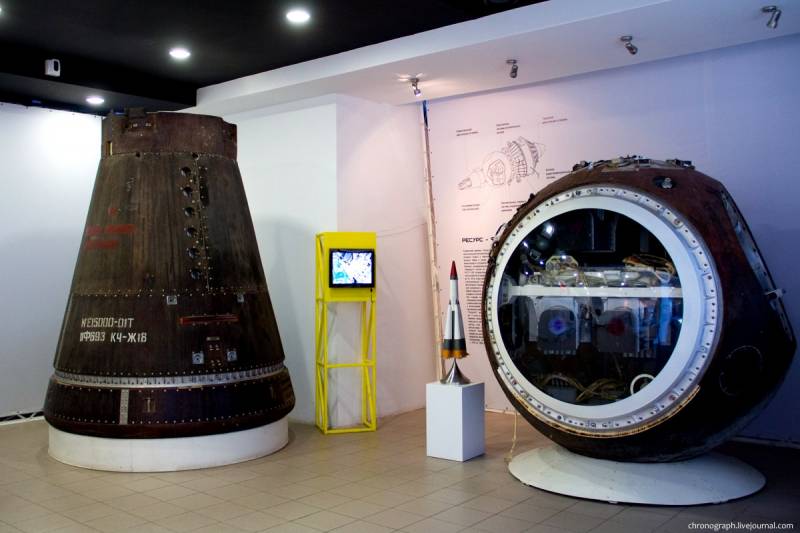
On the left is the Yantar-2K product after the flight, on the right is the scientific Resurs-F1. Photo Chronograph.livejournal.com
From a design point of view, the Zenit-2 device was a spherical Vostok capsule, inside which cameras, electronic intelligence devices, control equipment, etc. were located. Using a launch vehicle, the satellite was launched into a given orbit and photographed pre-programmed objects. Initially, it was assumed that the satellite would transmit data directly from orbit, but then its design was simplified. The finished films were delivered to Earth by descent and landing.
In 1968, operation of the modernized Zenit-2M apparatus began. Subsequently, Soviet industry created six more modifications. They had a common architecture and a number of unified components, and also worked on the same principle. The differences were in the composition, characteristics and capabilities of the cameras. Operation of all versions of Zenit continued until 1994, and by this time more than 500 devices had been built and used.
Also in the late sixties, the Yantar-2K devices came into operation. They had a different architecture and design, and also carried a different set of cameras. In addition, in the body of such a satellite it was possible to place two capsules for releasing photographic films, which dramatically improved the performance characteristics. Since 1989, the Orlets-1 satellite, equipped with eight descent capsules, has been in operation. This type of equipment was used until 2006.
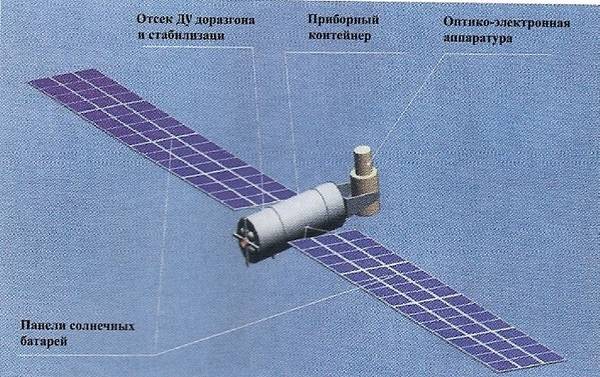
One of the satellite options for the TGR system with photo-television equipment. Graphics NPO Mashinostroeniya
With data transfer
Reconnaissance satellites with a landing method for delivering films had obvious disadvantages of various kinds. Such a satellite had a limited operational duration, could only take a certain number of frames, and the delivery of intelligence data, for obvious reasons, stopped the entire mission. At the same time, measures to get rid of these shortcomings were first taken during the development of the first version of Zenit-2.
Initially, Zenit-2 carried a set of Baikal photo-television equipment. It included means for processing images on film, a kind of scanner and encoding equipment for transmitting data to the control center. The Baikal product was present only on the first four Zenits, after which it was abandoned due to its complexity and low performance.
In September 1963, the USSR Council of Ministers issued a decree on the development of a promising system of “Television Global Intelligence” (TGR). OKB-52 (now NPO Mashinostroeniya) under the leadership of V.N. was appointed the lead contractor for the work. Chelomey, and NII-380 (now the Scientific Research Institute of Television) was entrusted with the creation of phototelevision equipment. The results of the project were expected by the end of the decade.
A year later, OKB-52 presented the general appearance of the promising TGR system. Two variants of the satellite with photo-television equipment, “Kometa-11” and “Mars”, were proposed, intended for reconnaissance of ground and sea targets, respectively. In general, the technical problems were solved, but the project was not implemented in practice for a number of reasons. It should be noted that the failure of the TGR project led to the continued operation of Zenit and Yantar.
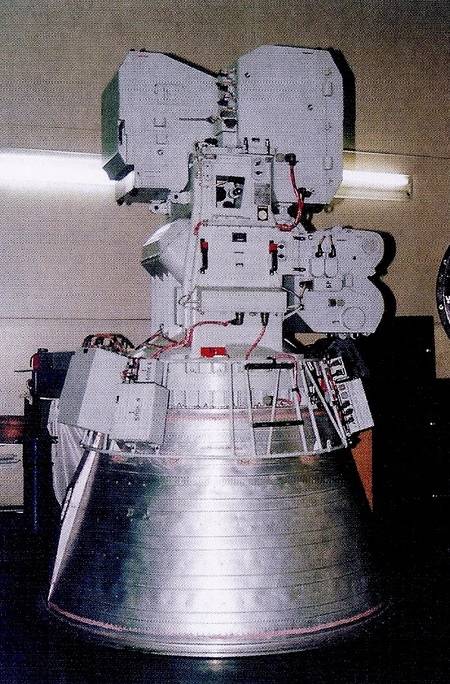
The Agat-1 optical reconnaissance complex for the Almaz station, including the Comet-11a system. Photo by NPO Mashinostroeniya
However, developments on this topic are not lost. The modified Comet-11 product became part of the Agat-1 reconnaissance complex for the Almaz space station. It allowed the station crew to view and save the photographs taken, as well as quickly transmit them to Earth.
In 1971, the development of a new TGR project was launched; it was entrusted to OKB-41 (now the Kometa Corporation) and Yuzhnoye Design Bureau. Thanks to new and more advanced components, their joint project featured improved technical and performance characteristics. However, in 1976, work was stopped, presumably due to the full launch of the Almaz project.
Products “Comet-11”, “Mars”, Agat-1”, etc. The systems differed in design, but had a common principle of operation. Through a lens with the required characteristics, an image of land or sea was projected onto a photoconductive surface, from which it was scanned by vidicon tubes. The received signal was processed and recorded or transmitted to Earth. "Kometa-11" provided a resolution of about 2,5 m, "Mars" - up to 10 m.
Digital technology
Phototelevision systems had limited resolution, which was due to the imperfection of videocons. In this regard, in the seventies, a search was carried out for new technologies that would improve the key characteristics of reconnaissance systems and increase the potential of the satellite as a whole. The solution was the so-called charge coupled devices. At the turn of the seventies and eighties, the first CCD matrices suitable for use in satellite reconnaissance were created.
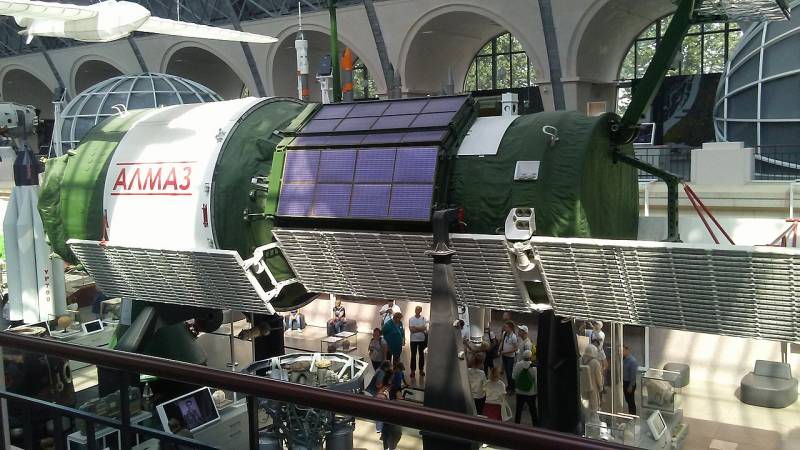
Museum model of the Almaz station. Various reconnaissance assets were to be present on board the station. Photo: Wikimedia Commons
Using this technology, TsSKB-Progress developed a new satellite, Yantar-4KS1. It featured an advanced high-performance lens, a high-resolution CCD camera, as well as a digital data processing system, magnetic tape storage and communications devices. Subsequently, the project was finalized - the resolution was improved and the ability to shoot in the infrared range was added.
The first launch of Yantar-4KS1 took place in December 1982. Subsequently, this technology was used in parallel with other satellites and solved the most complex and critical tasks. Modernized versions of the satellite with certain features were also put into operation. According to known data, the last Yantari were built and launched in the mid-XNUMXs.
After the completion of work on the Yantar-4KS1, the design of the Araks product began on the same principles, but with improved characteristics. The work dragged on and was suspended in the nineties. The first launch took place only in 1997, and in 2002 the second satellite was launched. Due to technical problems, both products only worked for a few months and were lost.
The next species reconnaissance satellites were the Persona products. From 2008 to 2015, three such products were sent into orbit, and two of them are still active. In 2015, the first launch of the modern satellite “Bars-M” took place; in March 2023, the fourth such device was launched.
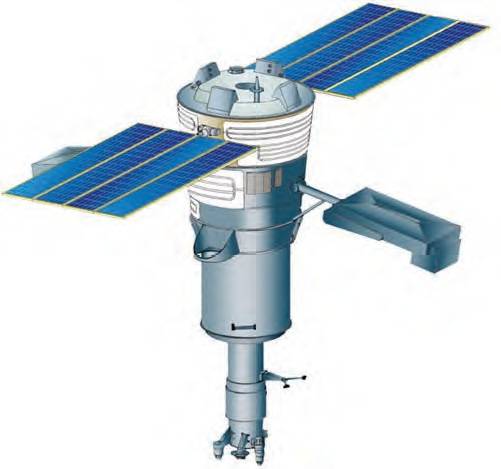
General view of the Yantar-4KS1 product in its working configuration. Graphics "TSSKB-Progress"
Starting with Yantar-4KS1, all domestic optical reconnaissance satellites are built according to the same principles and carry digital equipment. At the same time, the rapid development of the element base, software, etc. made it possible to significantly improve all tactical, technical and operational characteristics, as well as increase overall efficiency. As a result, the first Yantari of the eighties and the modern Bars, despite all the similarities, are fundamentally different at the level of characteristics.
Evolutionary process
The development of the first domestic satellite for species reconnaissance began in the late fifties - almost simultaneously with the creation of other space technology. The first practical results in this area were obtained in the early sixties, and soon satellites became an integral part of military intelligence. It should be taken into account that the reconnaissance capabilities of the orbital constellation are not limited only to optical means. There are also devices with radar equipment, electronic reconnaissance devices, etc.
It is not difficult to see exactly how the evolution of species reconnaissance satellites took place. Each next step in the development of spacecraft became possible thanks to the emergence of new technologies and instruments. The equipment was gradually improved and demonstrated higher performance and greater capabilities. To date, all the desired results have been achieved, and the armed forces can now count on receiving all the necessary information in a timely manner.
Information